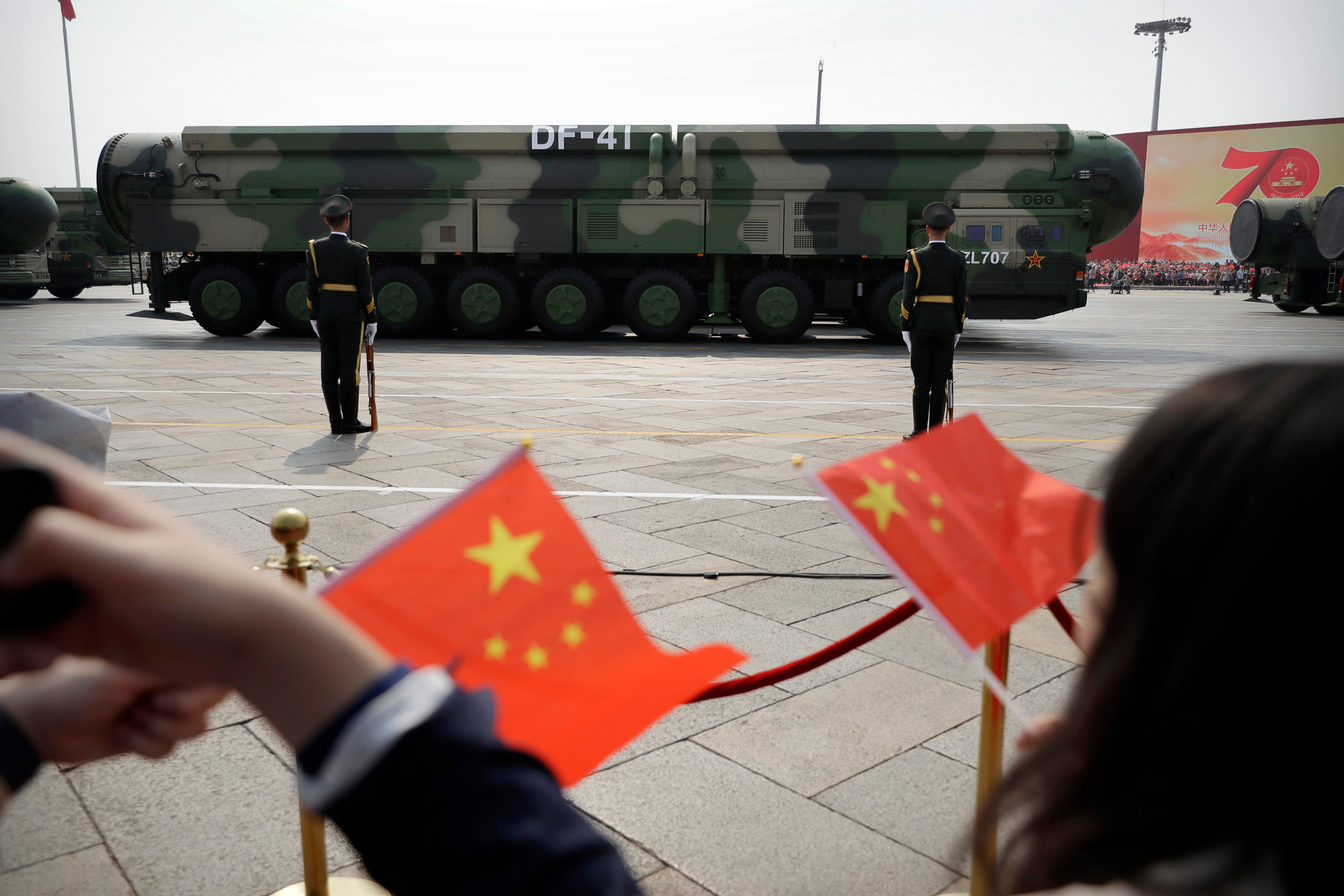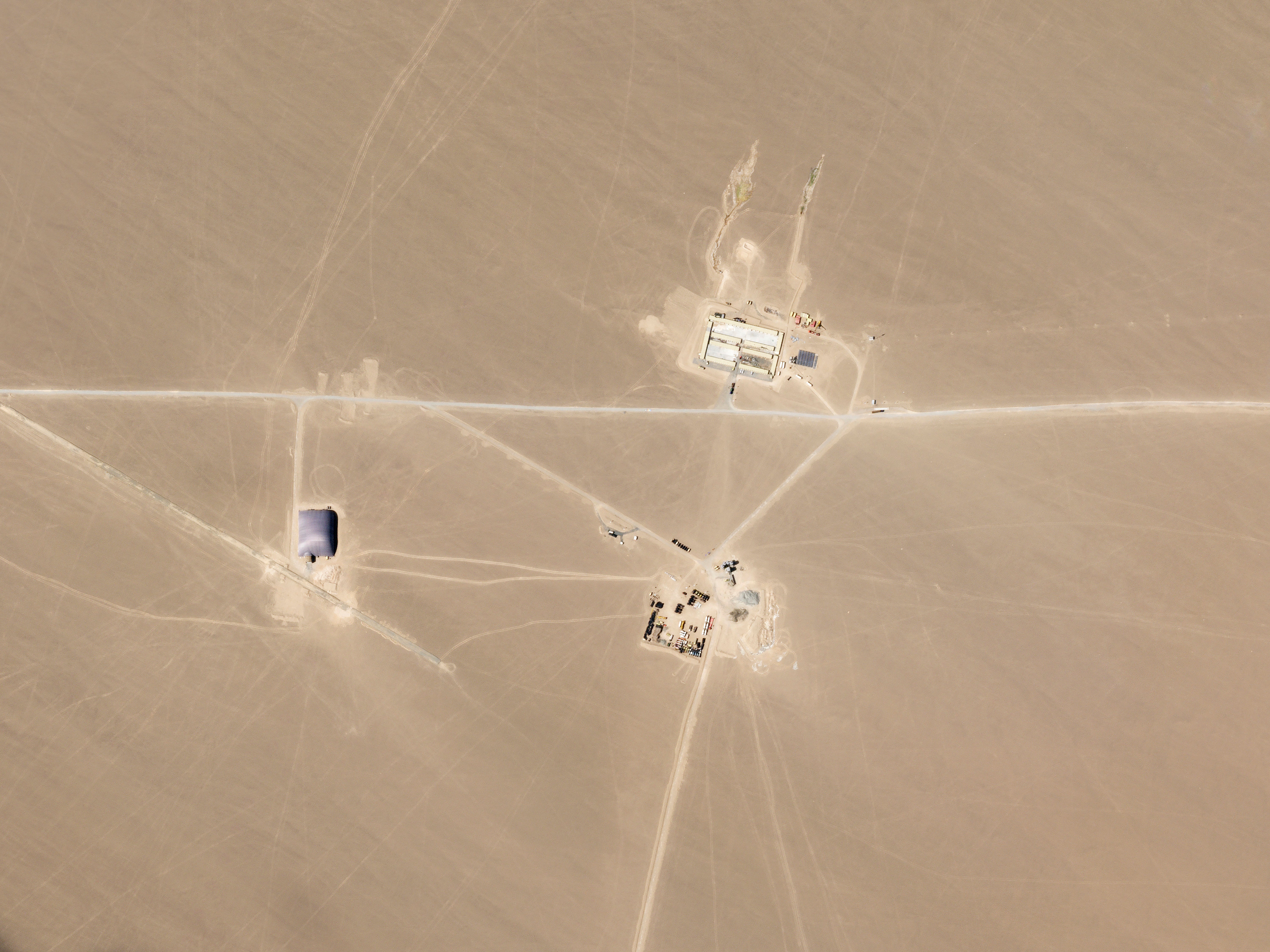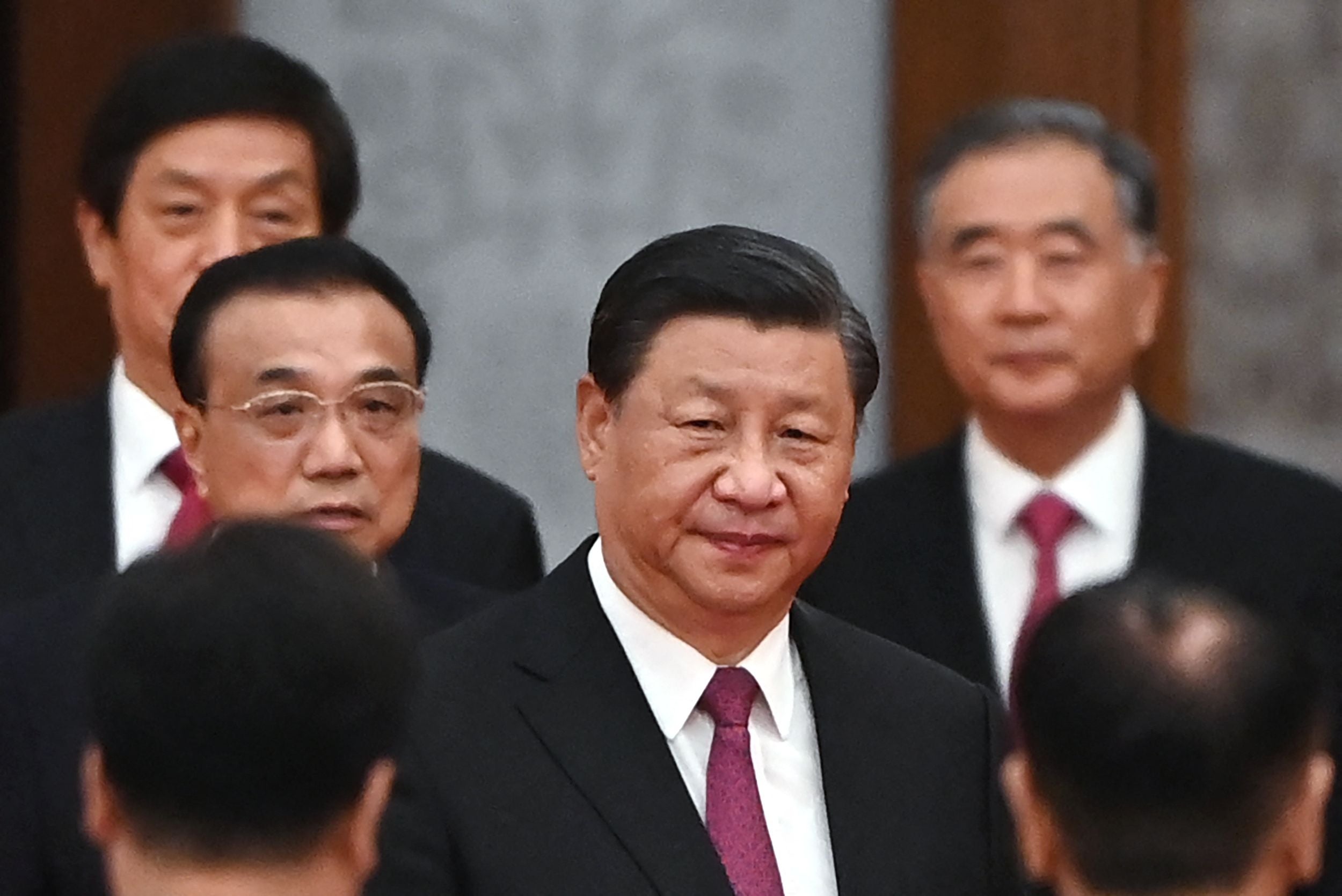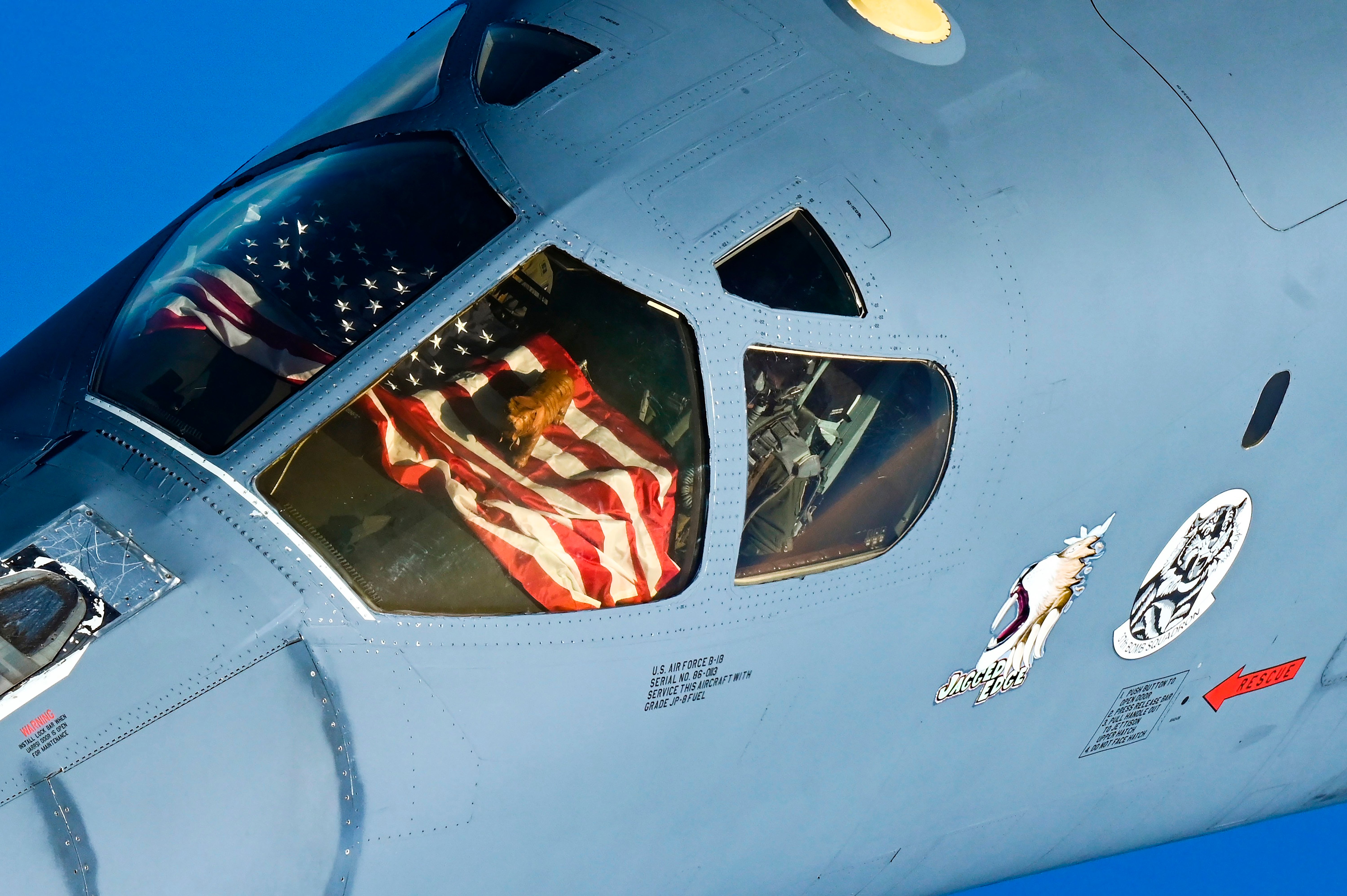China’s growing nuclear arsenal feared giving Beijing military edge over the US
China’s nuclear buildup caught the US off guard. Now the country’s military could take advantage and target Taiwan, writes Ahmed Aboudouh


Your support helps us to tell the story
From reproductive rights to climate change to Big Tech, The Independent is on the ground when the story is developing. Whether it's investigating the financials of Elon Musk's pro-Trump PAC or producing our latest documentary, 'The A Word', which shines a light on the American women fighting for reproductive rights, we know how important it is to parse out the facts from the messaging.
At such a critical moment in US history, we need reporters on the ground. Your donation allows us to keep sending journalists to speak to both sides of the story.
The Independent is trusted by Americans across the entire political spectrum. And unlike many other quality news outlets, we choose not to lock Americans out of our reporting and analysis with paywalls. We believe quality journalism should be available to everyone, paid for by those who can afford it.
Your support makes all the difference.China is stepping up its nuclear weapons arsenal at a stunning pace. And one of its main aims is to gain a strategic advantage over the US in any future war over Taiwan.
China’s leaders hope that by reaching a level of nuclear deterrence with the US, a future clash over Taiwan or in the South China Sea would remain strictly confined to conventional arms use, effectively depriving the US army of its advantage.
The People’s Republic of China (PRC) has already built up a small nuclear triad, including nuclear-capable ballistic missiles that could be launched from the land, sea and air - some of them are capable of reaching US cities.
This week, the Pentagon’s 2021 China Military Power Report explosively forecasted that China may obtain up to 700 deliverable nuclear warheads by 2027 and at least 1,000 warheads by 2030, a jump from the 500 warheads estimated by the Pentagon last year.
The 2027 date was particularly alarming. This is the date the People’s Liberation Army (PLA) will celebrate its centenary, and also the year many in Washington predicted China would invade Taiwan.
Beijing considers the self-ruled democratic island breakaway Chinese province and vows to retake it by force if necessary, while the US sees defending Taiwan as crucial to containing the rising military power of China.
“The number of warheads on the PRC’s land-based ICBMs (intercontinental ballistic missile) capable of threatening the United States is expected to grow to roughly 200,” the report said.
China expressed its “resolute opposition” to the report. The report “promotes the so-called China threat narrative and defames Chinese military’s modernisation” China’s defence ministry spokesman Wu Qian said in a statement. “It makes groundless accusations about China’s military spending, nuclear policies and Taiwan issues.”
The US operates around 3,750 nuclear warheads, so China as a nuclear superpower would still only have just over a quarter of that arsenal by 2030. However, analysts said the projected rise would embolden China militarily and could deter the US from deploying nuclear warheads in any future conflict involving the two countries.
“I think China isn’t seeking to ‘match’ US nuclear capabilities, but growths in China’s nuclear arsenal need to be understood in light of qualitative growths in the US arsenal too,” said Nicola Leveringhaus assistant professor of East Asian security at King’s College London
“China is increasingly less comfortable as a small nuclear weapons state compared to the massive nuclear state that is the United States. In other words, China wants to tip the nuclear scales more in its favour, but not so it is even with the United States.”

The latest disclosure implies, at least for now, that a Chinese nuclear strike against the US is a far-fetched scenario that could amount to suicide. Beijing, however, seems to think that a non-nuclear conflict with the US has become more likely, especially over Taiwan. A book by Washington Post investigative reporters claimed that last year top US General Mark Milley secretly reassured his China’s counterparts that the US will not launch a nuclear strike against the PRC.
Analysts say China’s strategy is to quickly reach “strategic stability” in its nuclear relations with the US, meaning establishing a mutual nuclear deterrence that forces both sides to keep any potential conflict at the conventional level.
“In a crisis or conflict, this means that the United States would be less likely to threaten China nuclear use to end the crisis or conflict,” said Taylor Fravel, an expert on Chinese nuclear weapons policy and director of the MIT Security Studies Program.
By reducing the threat of the massive American nuclear arsenal, China’s military options for war with Taiwan would grow decisively at the non-nuclear weapons level – marking the culmination of years of fast and broad investment in its military to create the most powerful fighting force in the Indo-Pacific region.
Gen Milley, speaking at the Aspen Security Forum in Washington last week, alluded to Beijing’s eagerness to prepare for a Chinese invasion of Taiwan. However, he said this was not likely in the next two years.
“Over the Taiwan Strait, as China’s conventional military advantages grow, Beijing worries Washington may have greater and greater incentive to threaten the use of nuclear weapons to prevent China’s military takeover of Taiwan,” Tong Zhao, a senior fellow in Carnegie’s Nuclear Policy Program in Beijing, told The Independent.
“China’s enhancement of its nuclear capabilities would work to deter such threat of US nuclear escalation,” he added.
Last year, the CCP leadership set a goal to turn the PLA into a modern military force by its centenary in 2027 – an army on par with that of the US.
The Financial Times last month said that China launched two missile tests. At least one of the two tests employed a “fractional orbital bombardment” system to propel a nuclear-capable “hypersonic glide vehicle” around the Earth for the first time, a development “stunned” US officials. China denied it had tested any missiles and said the test involved a spacecraft.

In Taiwan, reports revealed units from US marines and special forces have been deployed on the island for at least a year to train Taiwanese forces and bolster the island’s defences against a potential Chinese assault.
Many Chinese experts expressed their belief that China’s ultimate goal is to force the US to accept “coexistence” with China’s authoritarian political system and thwart its drive to “intervene” in China’s internal affairs and stop the nation’s “great rejuvenation.”
And a bigger and more accurate nuclear arsenal would be enough to do just that.
On the other hand, China is intensifying nationalism, at home and abroad, with its pushy, and sometimes rude, remarks by its “wolf warrior” diplomats. It also adopts a much more aggressive military posture in the South China Sea, threatening to destabilise security around disputed islands.
The Pentagon report estimates that the Chinese navy will reach 420 ships by 2025 and 460 by 2030, making it by far the largest battle fleet in the world.
“At the conventional level, China’s near-term goal is to acquire sufficient military advantage within the First Island Chain to deter any foreign powers from interfering in China’s efforts to consolidate control over claimed territories and to achieve national unification with Taiwan,” Mr Tong said.
This strategic transformation in China’s military has caused concern among army leaders in Washington that China’s nuclear build-up is aimed at checking the US’s global dominance.
Speaking at the Aspen Security Forum, Gen Milley said: “They are clearly challenging us regionally, and their aspiration is to challenge the United States globally …They want to challenge the so-called liberal rules-based order … They want to revise it.”

But others believe that the same can be said about the US and Russia’s efforts to accelerate their weapons’ arsenal. In February, the two sides extended the New Start nuclear arms control treaty for five years in the eleventh hour before its lapse. China has never been part of this treaty which puts a cap on the signatories’ number of nuclear warheads.
But this didn’t slow the US’s push to modernise its own nuclear delivery systems, including stealth strike fighters and bombers and new ballistic missile submarines. In recent years, Washington was also busy with enhancing its missile defences while pulling out of a number of arms control treaties previously signed with the USSR.
Following China’s missile tests, the US navy and army tested hypersonic weapon prototypes, and in fiscal year 2022, the Pentagon requested around $4bn for hypersonic weapons systems.
Russia has the lion’s share of nuclear warheads, estimated at about 6,500, and it was recently reported Moscow is developing two new nuclear-capable hypersonic missiles.
“I don’t believe China’s (nuclear) growth on its own challenges the liberal order,” Ms Leveringhaus said. “US and Russian nuclear arsenals that run into the many thousands and in which they strongly reject international treaties are a much greater challenge to ‘a liberal rules based’ order.”



Join our commenting forum
Join thought-provoking conversations, follow other Independent readers and see their replies
Comments